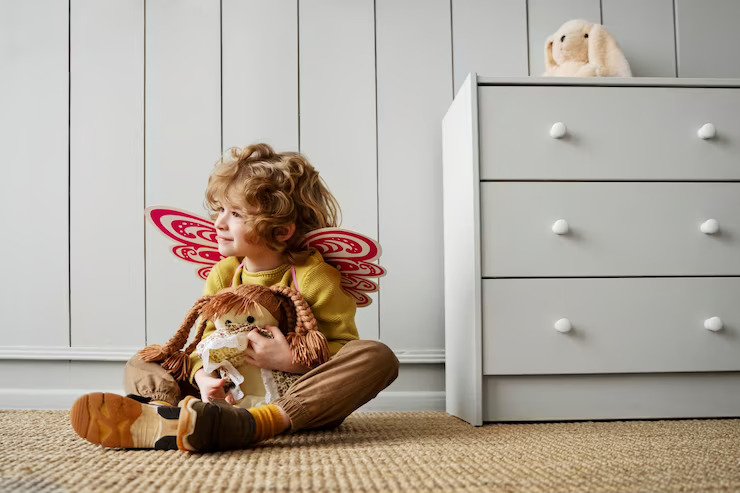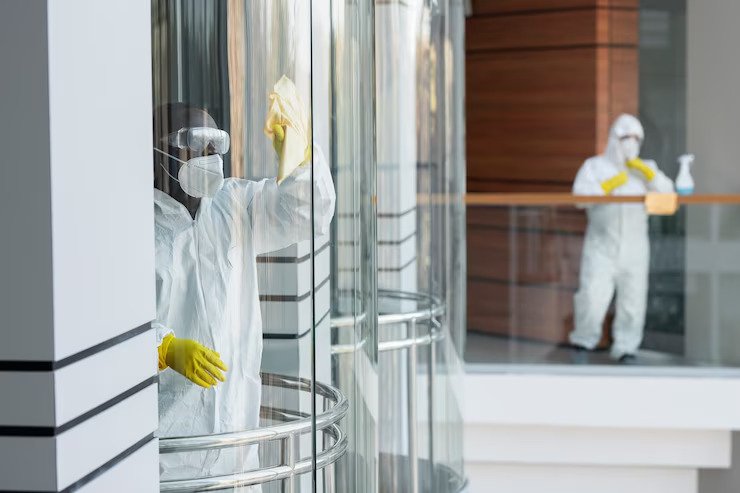16 Must-Have Safety Products For Kids
7 Mins Read
Published on: 18 April 2023
Last Updated on: 13 November 2024

toc impalement
A toddler’s curiosity has no bounds, and they will find a way to explore every nook and cranny of the house in search of hidden treasures.
Nothing is more essential to parents than the well-being of their children, although doing so might seem like a full-time job at times.
Child-safety devices and reminding older children to re-secure them may prevent inevitable accidents.
Fortunately, you can get most of these safety measures with little effort and cost. Hardware, baby accessories, supermarkets, pharmacies, home improvement shops, and online retailers sell them. The best security measures are simple yet strong enough to prevent unauthorized entry.
To function effectively, they need expert installation. Take the time to read and comprehend the installation instruction. Remember that no gadget is foolproof, and resourceful kids have been known to bypass or deactivate even the most secure of them.
Kids’ Essential Home Safety Products You Can’t Live Without

The Philippine Statistics Authority (PSA) predicted in October that 2020 would see 1.5 million births, the lowest amount since 1986. Despite this decline, iPrice discovered that interest in baby items among Filipinos surged by 146% in 2021.
Filipino parents have come to appreciate the value of newborn safety equipment and essential baby products over time. They also want to keep their babies safe, so online baby shops have surged.
The meta-search technique discovered that Filipinos seek ways to entertain their children at home. Toys, diapers, and infant supplies get the most significant Google impressions (127 percent).
Inflatable pools and baby bicycles have the most Google impressions. However, in this article, we will learn about the necessary baby safety gear every family should possess.
For instance:
1. Baby Monitors
Baby monitors are convenient for keeping an eye on your child when you are in another part of the home. Two units, one left in the baby’s room and one carried by the parent, enable the parent to keep tabs on the infant at all times.
Some baby monitors include temperature sensors, lullabies, motion-detecting pads, HD video screens, intercoms, feeding timers, and night lights.
Some are compatible with various electronic devices. A basic, low-cost version will merely be able to play sound. Consider the functions you will need from a new screen.
2. Secure Sleeper
A baby or toddler’s crib is the most likely location for an accident to occur. Babies may suffocate on anything placed in their crib, including cushions, blankets, and toys. Asphyxia is also risky if the mattress cover is left undone.
SIDS is most common in infants between the ages of 3 and 5 months. The danger of sudden infant death syndrome and other injuries in cribs may be significantly reduced by using secure sleepers.
Safe co-sleeping is an option for many families, and many of them use a secure sleeper. However, a crib is an acceptable alternative. A safe sleeper’s mesh sides allow air to circulate even if the baby moves their head, and there is no blanket or comforter to cover the mattress.
Most safe beds are also easily transportable; you can get them from a credible baby’s store.
3. Window Guards
Small children may quickly push through a screen and hurt themselves if they fall through. Bars can be installed on a home’s windows, although doing so can be expensive and aesthetically unappealing.
Children may be protected from potential window injuries by using affordable window guards.
When it comes to safety, the Window Guard is an excellent option. They could be mounted in various ways and work with windows ranging in width from 26 inches to 40 inches.
The height of the window guard will be around 24 inches. Children won’t be tempted to climb up and play with the window, and the room may still get some fresh air thanks to the mesh.
A youngster resting on this window guard is safe since it can handle weights of up to 60 pounds.
4. Safety Gates
By installing safety gates, avoid having your kid tumble down the stairs and keep them out of potentially dangerous rooms. Look for safety gates that are tough for youngsters to remove yet simple for adults to open and shut.
Only utilize gates that screw to the wall at the top of the steps. For your gates, make sure they are compliant with the latest safety regulations. Older safety gates should be replaced if they feature “V” forms big enough to trap a child’s head and neck.
5. Toddlermonitor
Easy to install, the Toddlermonitor door alarm sends push alerts when the door opens or closes. Even if your phone is in quiet mode, Toddlermonitor will still send you alerts according to your pre-set preferences.
It comes in three different colors, is non-toxic, and has no little parts to swallow. With no hardware to set up, Toddlermonitor is simple to take with you on a weekend trip or to take with you when you go to bed.
6. Hearth Gate
Many first-time homeowners install a living room fireplace after relocating from a rental. Fireplaces are dangerous, especially for children, if not properly maintained. Use biofuel burners because they offer a safe and child-friendly option with their smokeless, odorless, and ash-free operation, ensuring a worry-free environment for families.
Glass and metal parts of a fireplace may cause severe burns even if the fire itself is hidden from view. On average, fireplaces may reach temperatures of 500 degrees Fahrenheit.
Researchers at Safe Kids Worldwide found that the age range from eight months to two and a half years old was the most vulnerable to fireside burns. A hearth gate can be installed to prevent youngsters from entering the fireplace or being burned by a wood stove.
It also helps prevent others from burning when they accidentally bump against it in a busy space. Grills may also be enclosed with hearth gates to prevent injury to children and pets.
7. Carbon Monoxide Monitor
The CDC reports that between 1999 and 2010, carbon monoxide poisoning claimed the lives of 5,149 people. Carbon monoxide is called a “silent killer” because it has no discernible odor, color, or taste and is difficult to detect. Drywall is not an impenetrable barrier against carbon monoxide.
Carbon monoxide detectors are critical for keeping tabs on indoor levels of this potentially deadly gas.
8. Safety Cabinet Locks
Several substances are within easy reach of children and might do them harm. Cabinets with childproof locks prevent children from opening them and accessing possibly dangerous objects.
You only need knobs or handles to put these locks on your cabinets. They don’t harm cabinets and are simple enough for grownups to use.
9. Baby Harnesses
A baby harness from an online baby shop will save you from losing a hyperactive child in a busy public location. These feature a strap that you may grasp and tie to your baby’s chest, wrist, or waist or to a backpack.
10. Smoke Alarms
Install smoke detectors on every house level, especially near bedrooms and other sleeping places. A smoke alarm is a lifesaving device that may help save lives and prevent injuries in the event of a fire.
Smoke alarms should be tested monthly to ensure proper operation. If you use alarms, swap out the batteries at least once a year or look into long-lasting options like 10-year batteries.
11. Straps for Your Furniture and Television
If your kid climbs heavy dressers, bookcases, or shelves as pull-up bars, attach safety straps to tie them to the wall. Each piece of furniture should have two straps. If you have any top-heavy electronics, such as a flat-screen TV, secure them using safety straps.
12. A Stove Guard
The pots and pans on the burner may seem harmless, but your child may not realize they are pretty hot. This heat-resistant translucent plastic screen protects your toddler from the stove.
13. Toilet Locks
In addition to being disgusting, toddlers may drown in as little as two inches of toilet water. There’s a lock on the toilet seat so the lid won’t open accidentally.
14. Safety Seat
It’s the only car seat your kid will ever need, and it’s just as crucial to your child’s safety as the one in your car. However, having the correct car seat for your kid doesn’t imply you want to buy a new one every time their requirements change.
What about a booster seat that may be used for over a year? This seat grows with your child, from the rear-facing, harnessed mode for newborns to the backless booster mode for older children.
15. Child-Safe Restraints
Regarding childproofing, many individuals overlook potentially hazardous items like unstable furniture and televisions. Children will grasp onto anything for support when they start to walk, but this will keep them (and your belongings) safe. The straps can be quickly attached to the wall or furniture for a stable grasp.
You may fasten the straps to the back of your television, a dresser, a shelf, or a bookcase. While some models provide adhesive straps, a secure screw kit should be prioritized.
16. Smooth Surroundings
There should always be a comfortable place for kids to land, whether they are playing indoors on a hard floor or outdoors on the sidewalk.
The market is flooded with many play mats, from rollable blankets to astroturf tiles. But the timeless foam mats are the best indoor and outdoor play options. Babies can handle falls, but it is best to protect them with play mats if no carpet or grass is available.
Conclusion
Child-safety devices can prevent accidents. Thankfully, these precautions can be obtained with little time and money.
Find a reputable baby store that carries these baby products. Adequate security measures should be easy to implement without compromising on strength. They need professional installation to work correctly. Remember that resourceful youngsters may find ways around even the most secure equipment.
Read Also:


















Comments Are Closed For This Article